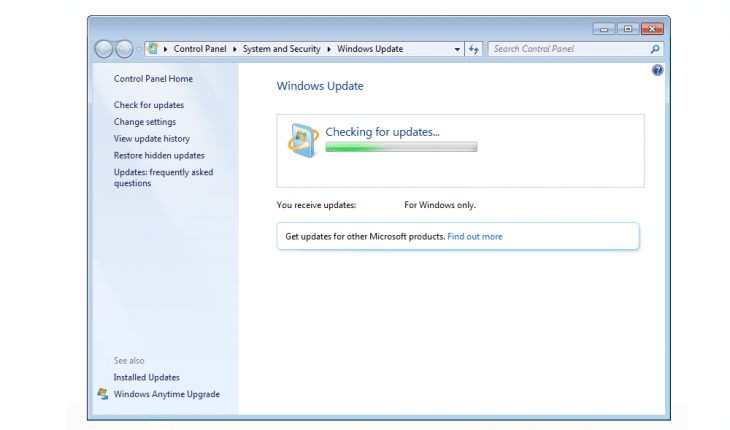Windows 10 Installation Checking For Updates
I've done several Windows 7 to Windows 10 upgrades and haven't had an issue until now. I went directly to the Microsoft page for the Windows 10 upgrade as this was a fresh Win7 build and I didn't want to wait for the update to come. Looking for Windows Updates in your Windows 10 PC? It’s not in the Control Panel anymore! Get onto to the Settings app to check the latest Windows Update and install them on your PC.
- Windows 10 Setup Stuck Checking For Updates
- Windows 10 Check For Updates Manually
- Windows 10 Installation Checking For Updates 0%
Checking for and installing Windows updates, like service packs and other patches and major updates, is a necessary part of running any Windows operating system.
Windows updates can support your Windows installation in many ways. Windows updates can solve specific problems with Windows, provide protection from malicious attacks, or even add new features to the operating system.
How to Check for and Install Windows Updates
Windows updates are most easily installed using the Windows Update service. While you could certainly download updates manually from Microsoft's servers, updating via Windows Update is considerably easier to do.
The Windows Update service has changed over the years as Microsoft released new versions of Windows. While Windows updates used to be installed by visiting the Windows Update website, newer versions of Windows include a special built-in Windows Update feature with more options.
Below is the best way to check for, and install, Windows updates based on your version of Windows. You'll need to know which version of Windows you have to make sure you're following the correct steps for your computer.
Check for and Install Updates in Windows 10
In Windows 10, Windows Update is found within Settings.
To get there, select the Start menu, followed by the gear/settings icon to the left. In there, choose Update & Security and then Windows Update on the left.
Check for new Windows 10 updates by choosing Check for updates.
In Windows 10, downloading and installing updates is automatic and will happen immediately after checking or, with some updates, at a time when you're not using your computer.
Check for and Install Updates in Windows 8, 7, and Vista
In Windows 8, Windows 7, and Windows Vista, the best way to access Windows Update is via the Control Panel.
In these versions of Windows, Windows Update is included as an applet in Control Panel, complete with configuration options, update history, and lots more.
Just open Control Panel and then choose Windows Update.
Windows 10 Setup Stuck Checking For Updates
Select Check for updates to check for new, uninstalled updates. Installation sometimes happens automatically or it might need to be done by you via the Install updates button, depending on what version of Windows you're using and how you have Windows Update configured.
Microsoft no longer supports Windows Vista, and as such, doesn't release new Windows Vista updates. Any updates available via Windows Vista's Windows Update utility are ones that have not been installed since support ended on April 11, 2017. If you have all updates already downloaded and installed up to that point in time, you won't see any available updates.
Check for and Install Updates in Windows XP, 2000, ME, and 98
In Windows XP and previous versions of Windows, Windows Update is available as a service hosted on Microsoft's Windows Update website.
Similar to the Control Panel applet and Windows Update tool in newer versions of Windows, available Windows updates are listed, alongside a few simple configuration options.
Checking for, and installing, uninstalled updates is as easy as selecting those respective links and buttons on the Windows Update website.
Windows 10 Check For Updates Manually
Microsoft no longer supports Windows XP, nor versions of Windows that preceded it. While there might be Windows updates available for your Windows XP computer on the Windows Update website, any you see will be updates released prior to the end of support date for Windows XP, which was on April 8, 2014.
More on Installing Windows Updates

The Windows Update service isn't the only way to install Windows updates. As mentioned above, updates to Windows can also be downloaded individually from Microsoft Download Center and then installed manually.
Another option is to use a free software updater program. Those tools are usually built specifically for updating non-Microsoft programs but some include a feature for downloading Windows updates.

Windows 10 Installation Checking For Updates 0%
Most of the time, Windows updates are installed automatically on Patch Tuesday, but only if Windows is configured that way. See How to Change Windows Update Settings for more on this and how to change how updates are downloaded and installed.